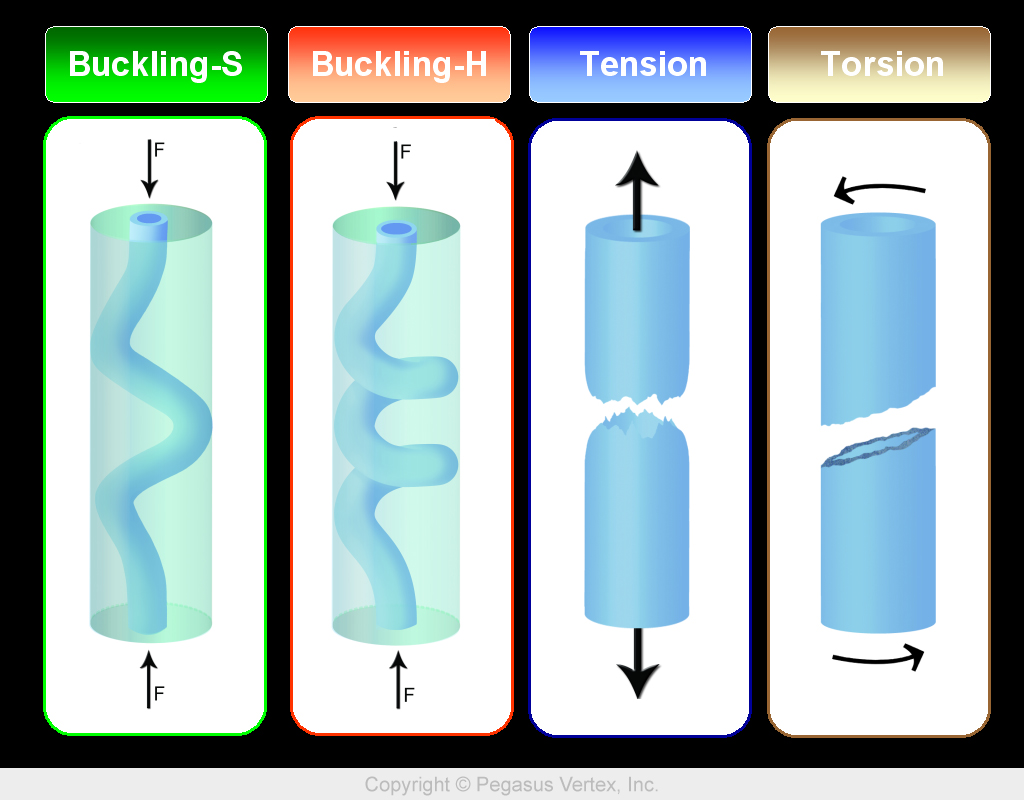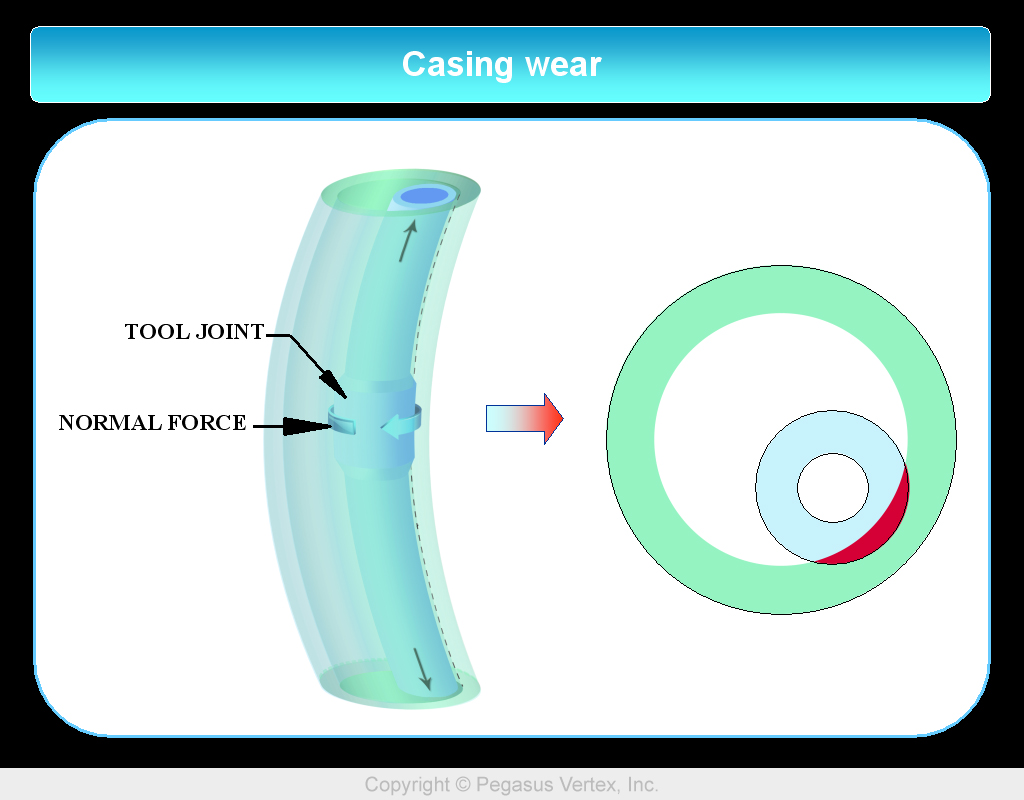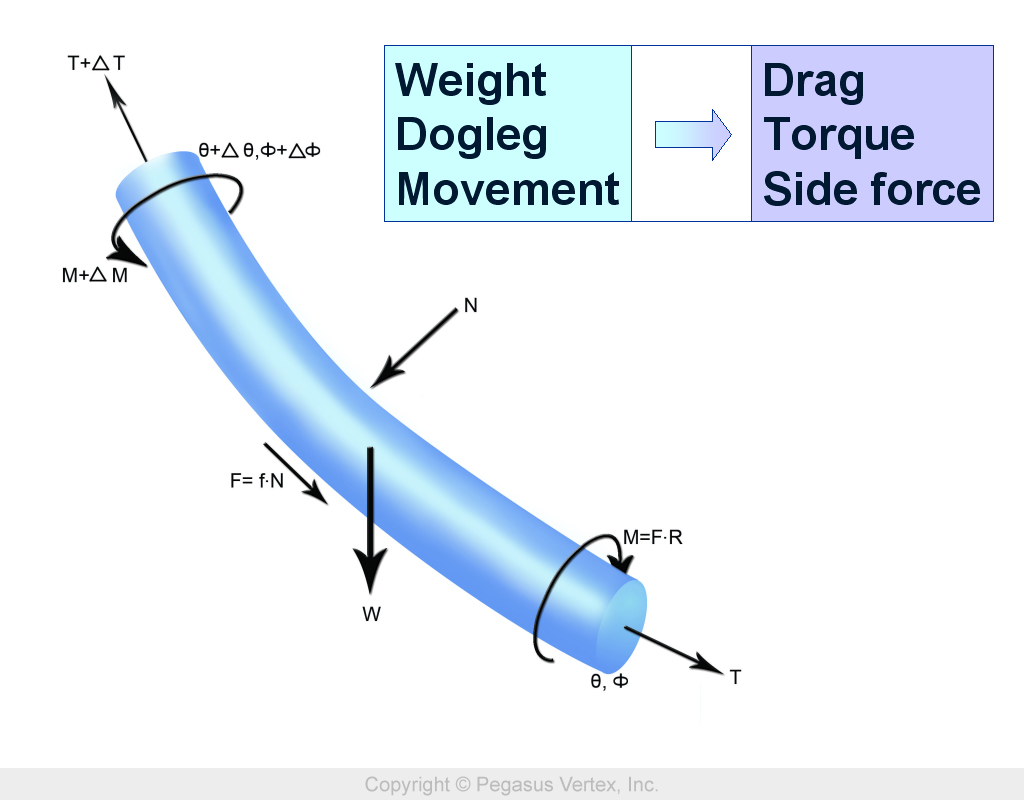No matter it is an operation of drilling or casing running; any pipe movement in the deviated wellbore produces torque and drag (T&D) along the pipe. T&D is our weapon to drill a well or run a casing to the bottom. However, excessive T&D will cause equipment and operation failure.
Basically, axial movements such as drilling ahead or tripping creates drag, while rotation produces torque. The magnitude of T&D is determined by the combination of these two movements. Rotation shifts the resistance from drag to torque. In other words, you can shift the drag to torque by rotating the pipe. That is why people tend to rotate the pipe little bit if pipe gets stuck.
Torque and Drag Calculation
Typical T&D analysis starts by dividing the pipe into small elements. Calculation begins from the element at the bottom of the pipe, where weight on bit (WOB) or torque on bit (TOB) is expected. For each element, force and torque are balanced and the T&D at the top of the element are calculated step by step and from bottom to top, calculation is performed for each pipe element, until it reaches the rig floor. We call the torque and drag at the top of pipe surface torque and hook load (with block weight), respectively.
Some terms often used in torque and drag analysis are listed here with explanations:
- Friction Factor (F.F.) - the representation of the friction between the wellbore/casing and the work string. The friction factor is dependent on mud type, pipe and wellbore and cutting concentration. Higher cutting concentration leads to higher friction factor.
- Rotating Off Bottom (ROffB) – pipe rotates without any axial movement, such as rate of penetration or tripping. There is no WOB or TOB because bit is not engaged with formation.
- Rotating On Bottom (ROnB) – pipe rotates without any axial movement, such as rate of penetration or tripping. However, WOB and TOB are present because bit is engaged with formation.
- Drilling – pipe rotates with certain rate of penetration and with the presence of WOB and TOB.
- Slide Drilling - Drilling with no drill string rotation. (only axial movement, no rotation)
- Sinusoidal Buckling - Sinusoidal buckling occurs when compressive forces on the string become too high, resulting in a snake-like bending in the string. Note that in this mode, the pipe deforms, but still in a 2D plan.
- Helical Buckling - a more extreme form of buckling which occurs when compressive forces pass through sinusoidal buckling and exceed the helical buckling limit. Helical buckling causes contact between the pipe and the wellbore, exerting force on the wall of the hole. Both drill string fatigue and interference with weight transfer to the bit occur. Helical buckling should be avoided.
- Helical Lockup - Helical lockup occurs when compressive forces on a string in helical buckling prevent axial movement. Forces at surface are not transmitted to the bit.
- Tension Limit- The tension limit of a material is based on its yield strength, which is measured in psi. When the minimum yield strength is exceeded, pipe will plastically deform. Plastic deformation occurs when pipe that has stretched does not return to its original shape.
- Make Up Torque- The rotational force used to make up a connection in the string. Drill pipe failure may occur when the make-up torque of a connection is exceeded.

- Stress in the String - The various stress that TADPRO models are axial, bending, torsional, and shear stresses. These stresses are summed up in the Von Mises Stress. Various failures occur as a result of repeated stress to a string, including cracking, washouts, and twist offs, etc.
- Stress in the String - The various stress that TADPRO models are axial, bending, torsional, and shear stresses. These stresses are summed up in the Von Mises Stress. Various failures occur as a result of repeated stress to a string, including cracking, washouts, and twist offs, etc.
- Casing Wear- Prolonged, repeated axial and rotational movement within casing will wear both at the string and the casing, potentially leading to string and casing failure.


